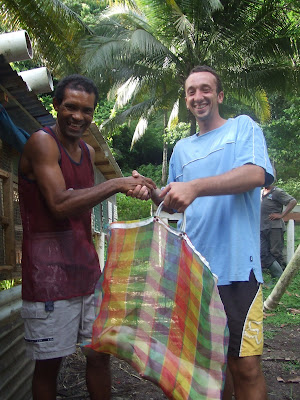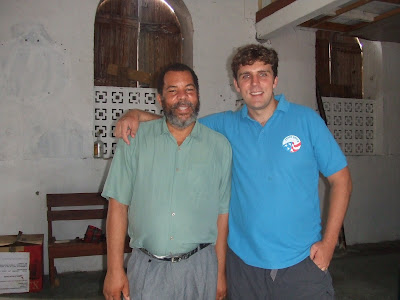Black Bird in Paradise
By Laura Adkins
It is the last full day of my vacation in St. Lucia. It is August near the equator, and I make my way in the 100% heat to the tiny crescent shaped beach just beneath the breakfast veranda. The white beach is cupped south and north by the lush, stunning juts of mountains, called the Grand Pitons.
I find the same small almond tree in the sand, overlooking the turquoise water. A breeze blows and captures me for the afternoon. It is the third day under “my” tree, where I watch animal commerce and stealth. A black bird cases leftovers for booty and tugs hard to pick up more than one French fry at a time. He jumps to escape perceived danger, and starts again. He drops one fry while trying to pick up the next, and repeats the effort 3 more times. He does not succeed at eating. What I learn from him is that greed doesn’t work, and doesn’t feed you in the long run.
As I throw my blue work shirt over the back of the lounge chair, an old man with a large green coconut approaches my tree. He is smiling, tan, lean, shirtless, and missing many teeth. He explains that he needs to go to the doctor and must make money.
“Would you like a coconut?” he asks. I ask the price. He says, “$3.00?”
I say, “Yes, I would like a coconut, please.” He lays down a cloth wrapped set of machetes and uses one to lop off the top of the coconut. He makes a nifty drink bowl with the smaller knife in a matter of seconds and inserts a straw for drinking. “It’s a cherry coconut,” he explains proudly, as if they are rare. Perhaps they are.
While cleaning his machete, he continues to tell me about his right ear. “I cannot hear. I need to see the doctor on Monday. It is $350.” I tell him I only have a $20 for the coconut drink, and ask if he can get change? Apparently, a familiar request, he walks to the restaurant bar perhaps 100 ft. from my tree. He returns explaining that the restaurant is not open yet. He hands me back my $20. I tell him to go sell more coconuts and come back with the change when he has it. I closed my eyes, leaning back on the lounge. The water laps, the bird makes war on the plastic dish of French fries, and I wonder how close I am to the equator.
The man returns in 15 minutes, grinning as he pulls two $5.00 bills out of his pants pocket. “A lady over there gave me $10.00 for my operation on Monday.” He hands them to me, outshining the sun in his honor and pristine character. I look him in the eye and hand them back to him. I am thinking that I cannot fly away with that many French fries, and push them back into his hand. Even if there is no ear operation, I must survive the moment with something more valuable than the $20. I now know that every moment is the most important one.
This paradise of aqua water, poverty, hunger, honesty, greed, and animal commerce, crowds under my tree and into my soul, as my physical eyes shut out the brightness. Chiaroscuro pushes these competing forces of nature into the open, letting light fall on our dance together. All elements and intention converge tail to head, ying to yang. Can one be charitable or honorable, unless these words become verbs? There is no use for my charity without his poverty; and he cannot be honorable without the opportunity.
I sit up and face the water with my realization. “Who is helping whom?” I ponder. The man turns around and walks back toward me. He is noble in his voice and carriage as he asks, “Are you alright?”




















































